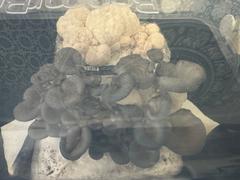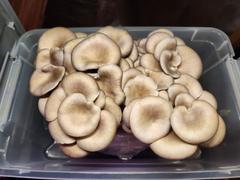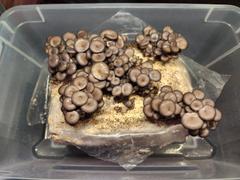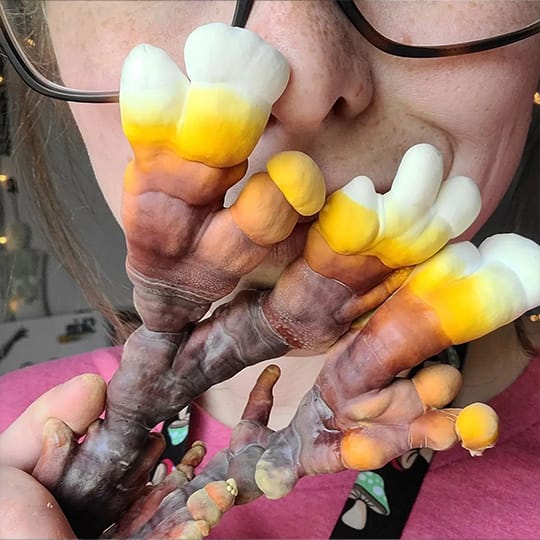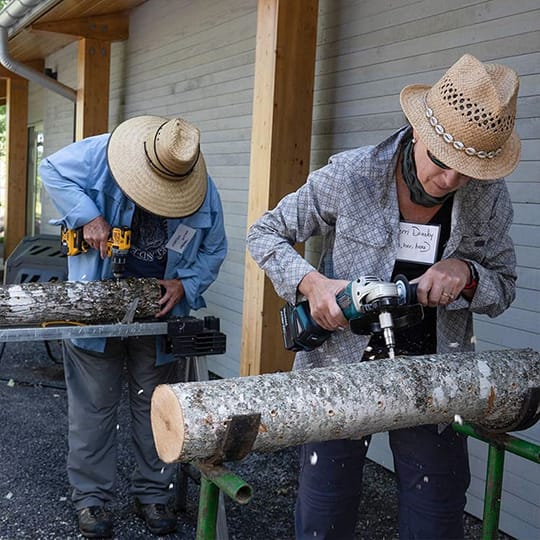

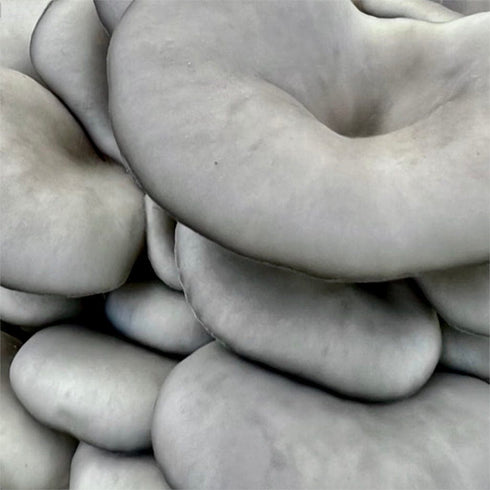
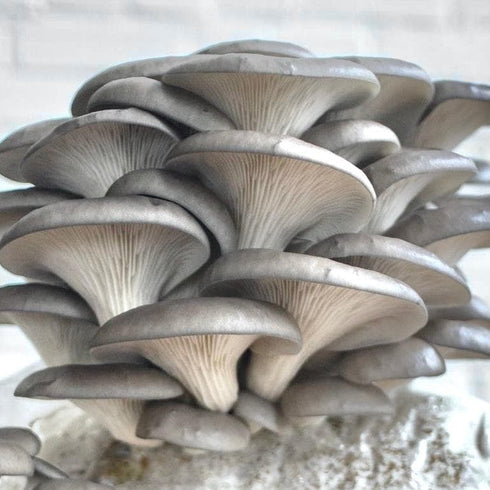
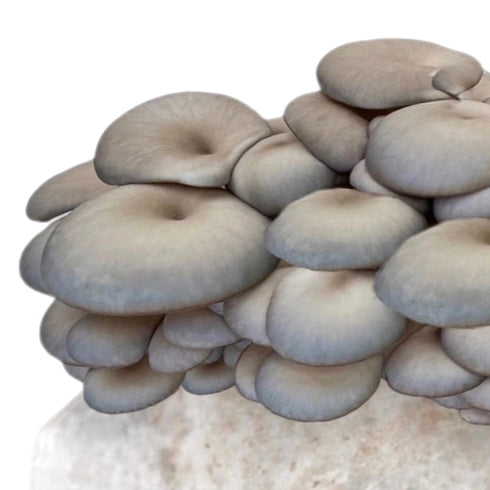
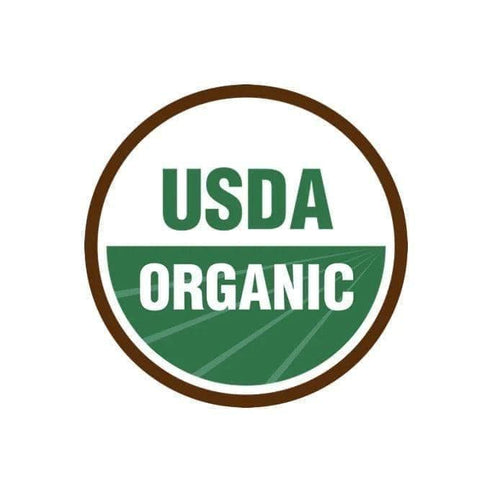









| Skill level | Beginner |
| Grow location | Outdoors |
| Grow speed | 1 to 2 weeks |
| Shelf life | 6 months (refrigerated) |
| Kit dimensions | 6in H x 9in W x 6in D |
| Kit weight | 5 lbs |
| Fruiting temps | 55-75°F |
Pleurotus ostreatus | USDA Certified Organic
Looking to add gourmet flavor to your garden with minimal effort? Our Blue Oyster Plant & Grow Garden block makes it easy. This USDA Certified Organic strain grows beautiful clusters of bluish-gray to brownish-gray mushrooms that emerge right from the soil. With their rich umami flavor and tender, meaty texture, Blue Oysters are a versatile kitchen staple—perfect for sautés, stir-fries, and more.
Blue oysters are known for being beginner-friendly and highly productive. Once planted outdoors, they can produce large flushes of mushrooms with little care. And if the conditions are right, you may enjoy a second (or even third) round of harvests.
-
Remove the block from the shipping box as soon as possible. Then, unfold the top of the bag, making room for air space. It's also important to check and confirm that the filter patch is not obstructed. This will help the organism breathe and continue to thrive until you are ready to grow your fruiting block!
-
Blue oyster mushrooms are vigorous, fast-growing, and perfect for new outdoor cultivators. With their dramatic blue-gray caps and savory flavor, they bring both beauty and bounty to shaded garden spaces.
How to Initiate Fruiting Outdoors
- Choose a shaded location: Find a cool, humid spot like under trees, beside a fence, or in a sheltered garden bed.
- Bury your block: Remove the plastic entirely from your block. Bury the block completely and cover with about 1" of soil or mulch.
- Maintain consistent moisture: Mist the surrounding soil or mulch regularly (1–2x daily in dry weather) to prevent the block from drying out.
Temperature & Airflow
- Blue oysters thrive in cooler temperatures (ideally 55–65°F), making spring and fall the best seasons for outdoor cultivation.
- Ensure good airflow to prevent excessive CO₂ buildup, which can cause long stems and small caps. Avoid enclosed or stagnant air pockets.
- More light and lower temps yield stronger pigmentation—deepening the classic blue hue.
Special Considerations
- Watch for rapid growth—blue oysters can mature quickly and drop spores if not harvested in time.
- Consider placing straw or leaf mulch around (not on) the block to help regulate humidity without suffocating airflow.
Harvesting
- Pick clusters when cap edges are still curled under for best texture, flavor, and shelf life.
- Harvest young to reduce spore production and improve storage.
- Use both hands or a clean knife to gently remove entire clusters without damaging the substrate.
With minimal effort, blue oysters will often produce multiple flushes—making them one of the most rewarding mushrooms to grow in the garden.
-
Temperature 55-75°F | 13-24°C Humidity (Phase 1: Primordia) 95-100% Humidity (Phase 2: Fruitbody) 85-95% CO2 Sensitivity (Phase 1: Primordia) <1,000 ppm CO2 Sensitivity (Phase 2: Fruitbody) <1,000 ppm - Primordia - The earliest recognizable stage of fruitbody development. Also known as “baby mushrooms” or “mushroom pins.”
- Fruitbody - A fully grown mushroom, the reproductive structure of the organism in which the spores are produced.
- CO2 sensitivity - When CO2 levels are too high, yields will decrease, stems will become long and stringy, caps will be small, and/or growth will halt.
-
If you don't plan to use immediately, you can refrigerate your block for up to 6 months.
-
The classic North Spore recipe is to slice up oyster mushrooms and sauté them in a heavy pan on medium heat with butter, garlic, and loads of fresh thyme and rosemary (or whatever other herbs you happen to have on hand!). Cook until the mushrooms have released their liquid, then continue cooking until that liquid has cooked off and the mushrooms begin to brown. Deglaze your pan with a splash of white wine, reduce once more, and finish with a touch of heavy cream. Season generously with salt.
Like all Oyster mushrooms, they retain water and may develop a viscous texture when under-cooked. If you prefer a firm or dryer texture, continue to cook Oysters until their liquid has reduced and cooked off and they begin to brown.
-
If you’re going to consume home-grown mushrooms, make sure to cook your fresh mushrooms thoroughly with heat. If it is your first time eating this species, it is best to start with a small amount to check for allergies, even if cooked.
Mushrooms grow spores as they develop. This is a natural means of reproduction. This is when people with allergies or compromised immune systems may want to consider putting fruiting mushroom kits outdoors or in a well-ventilated area. Spores in mushrooms sometimes cause respiratory irritation. In rare cases, spores may also cause irritation for some non-allergic or non-immunocompromised mushroom growers. If you are one of them, it is recommended to reduce the overall spore load by harvesting mushrooms while they are still in their younger growth stages.
You may also like
Making the world of mushrooms accessible to all
North Spore was launched in 2014 by a mycologist, an organic farmer, and a photojournalist -- three college friends brought together through their shared love of the mycological world.
What began as a simple love for mushroom foraging and cultivation quickly developed into an obsession with all things fungi. From there, an urban mushroom farm was born, as was the desire to spread the spore to the masses.
 i
i i
i i
i i
i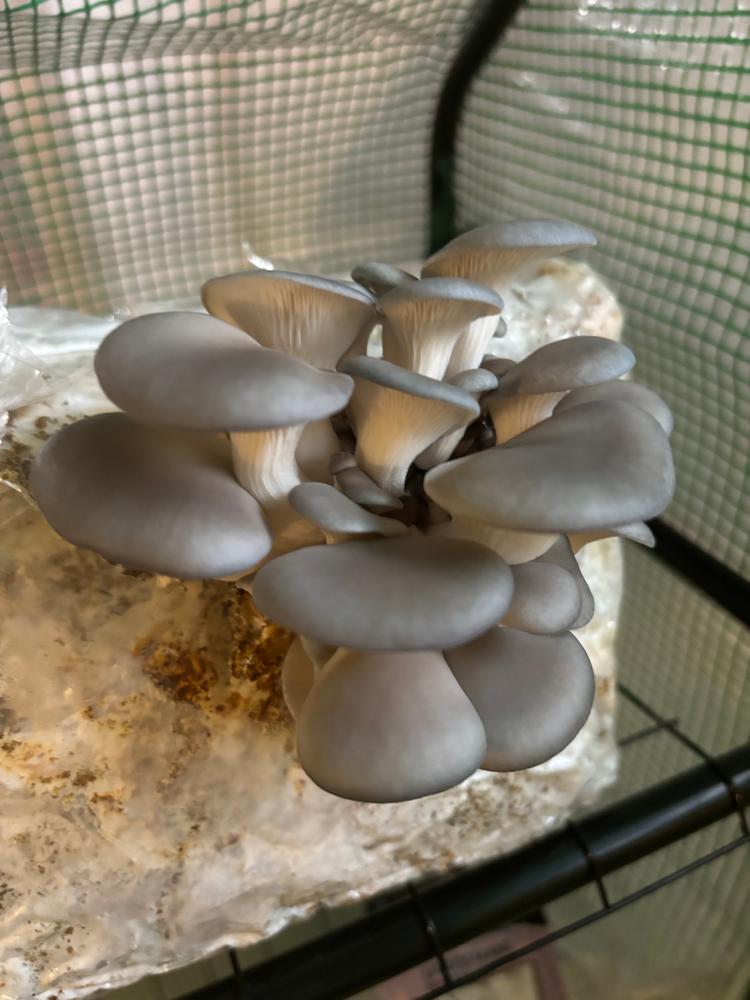 i
i i
i i
i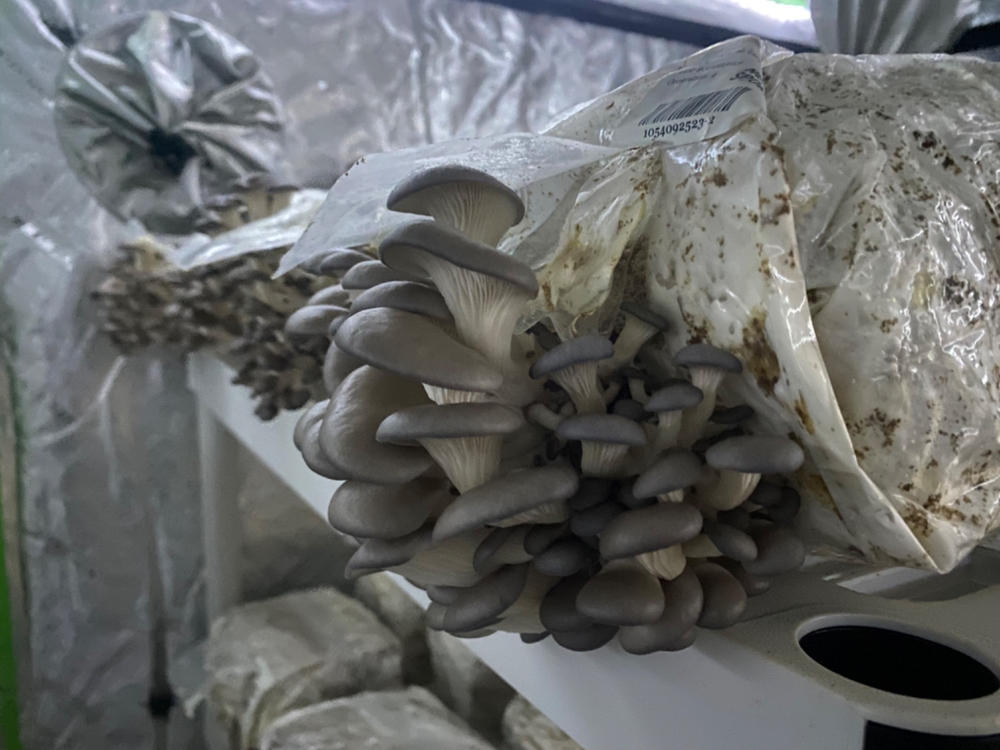 i
i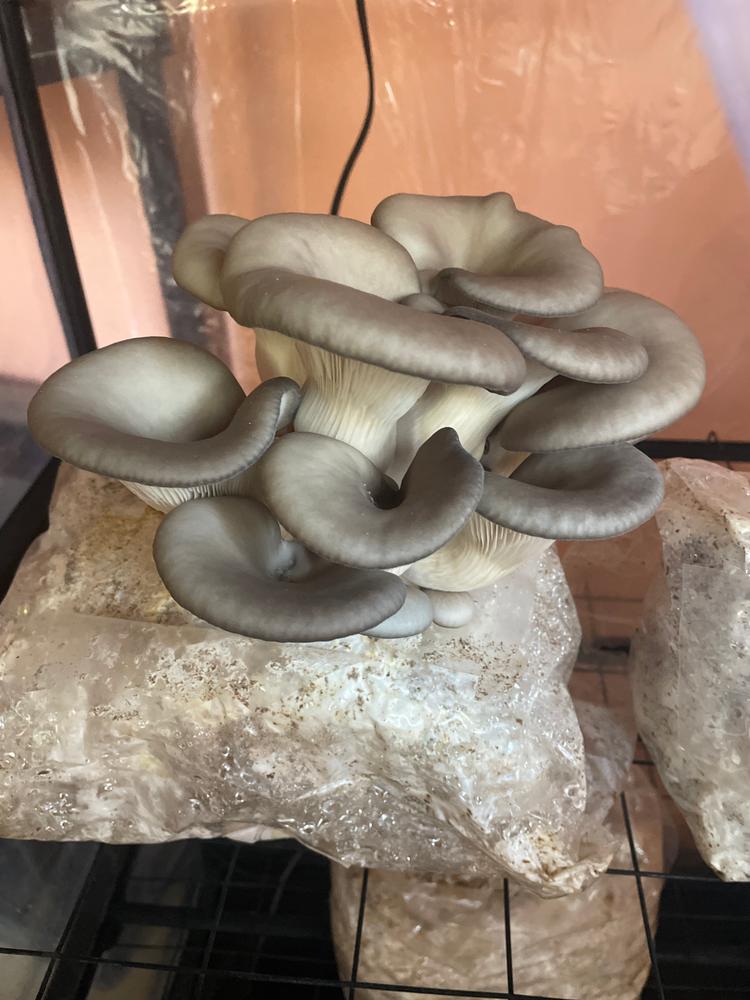 i
i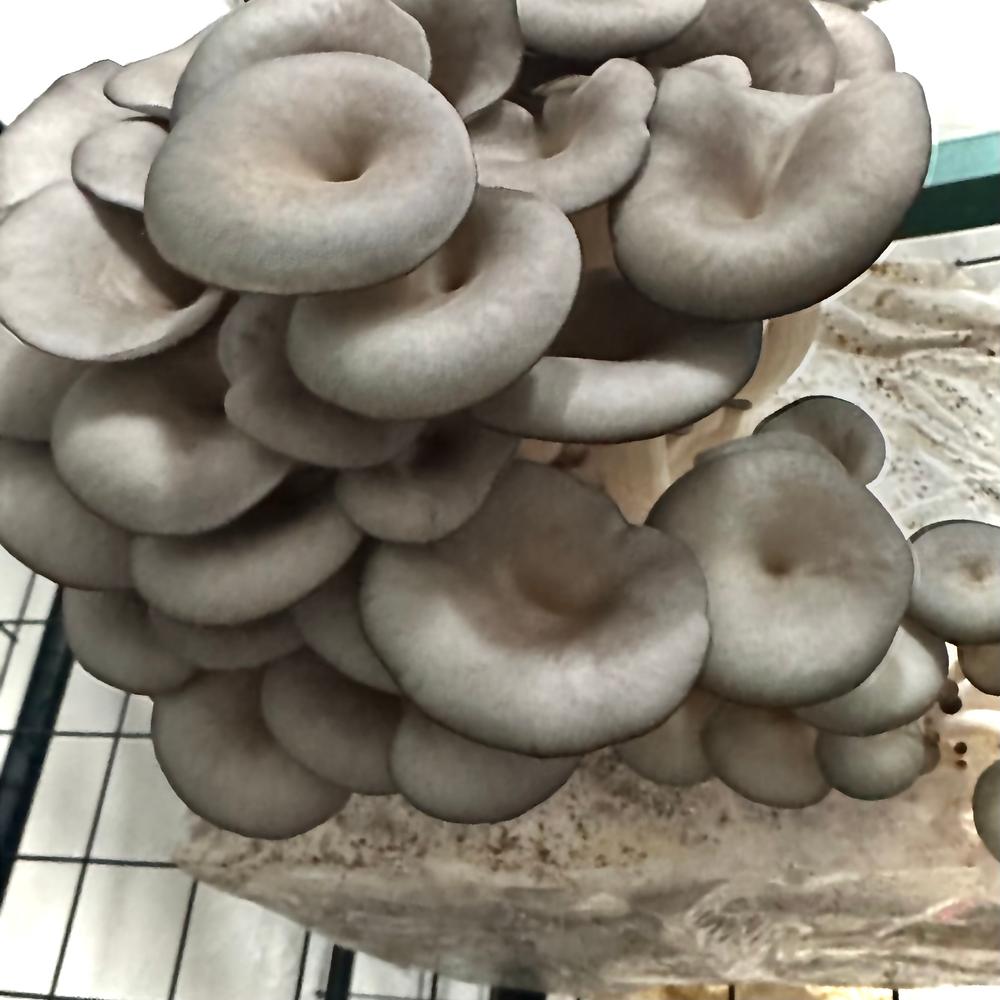 i
i- Reviews
- Questions
Thank you for submitting a review!
Your input is very much appreciated. Share it with your friends so they can enjoy it too!
Great Kit!
Awesome kit and easy to use. Unbelievable how many mushrooms were produced!
Huge Flush!
These were so easy to grow and produced three flushes.
Love love love!
Our first block to fruit and it did marvelous! We are on our 3rd flush. Very good mushroom and very versatile.
North Spore
Thanks for sharing the photo, Melissa! We're so glad you're enjoying the experience.

11 days to harvest
This was my first experience with a fruiting block. I harvested 24 ounces on day 11. I misted daily and kept a humidifier nearby. I'm excited to see how the next block does in a more controlled environment/monotub.
North Spore
Wow Ruth! These oysters look amazing! Thank you so much for sharing, and happy growing!
Incredible!!!
Five days into putting these blocks into my Martha tent set up and it's like they grow by the hour!!!

